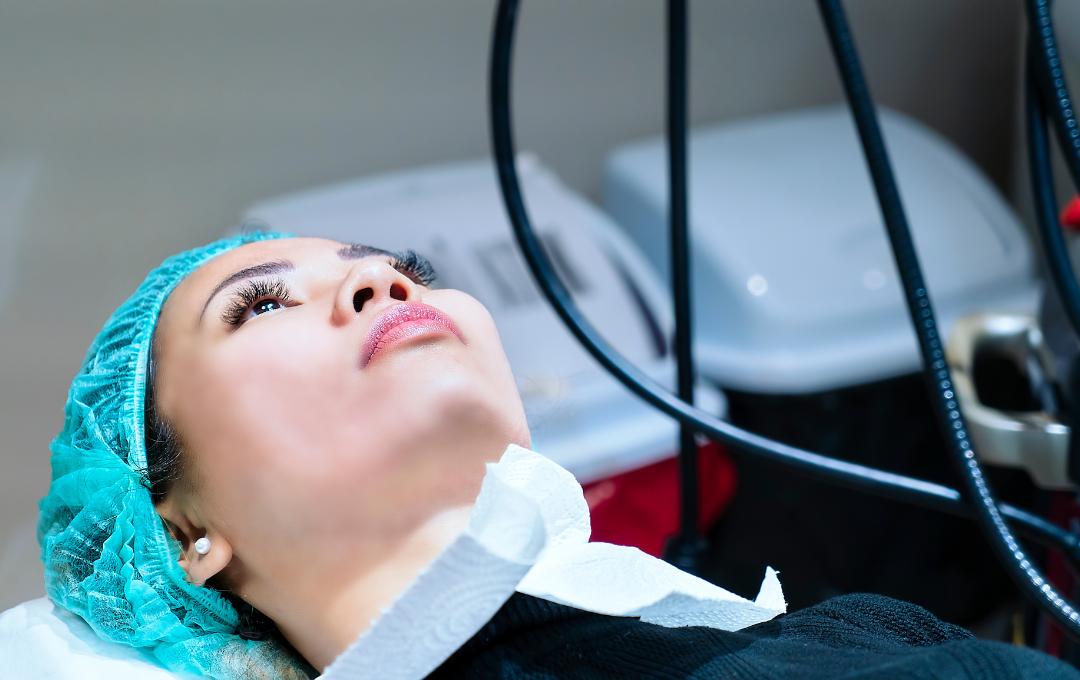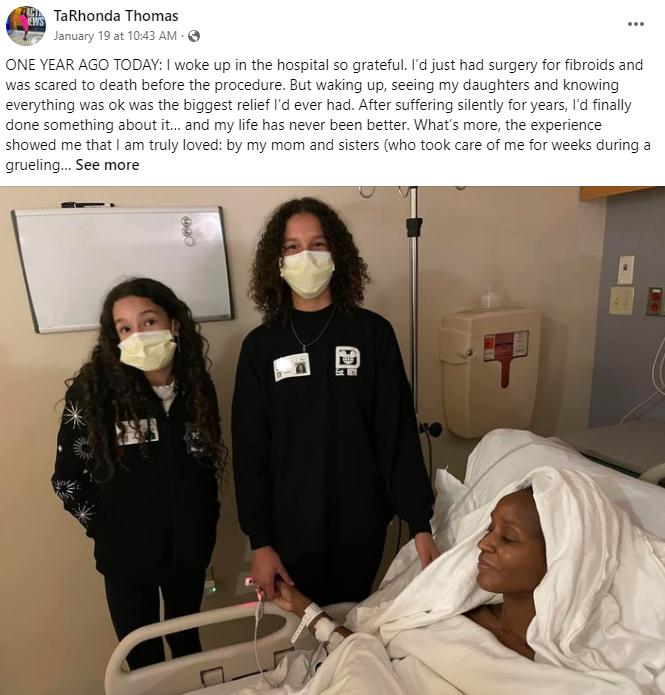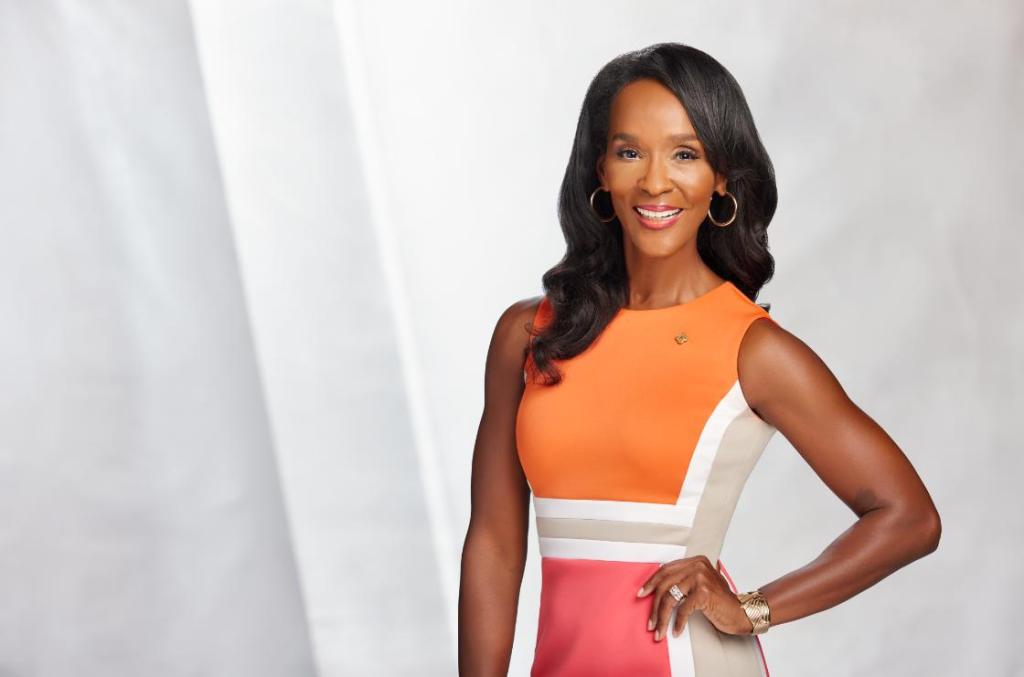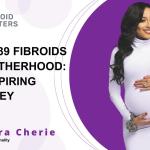
Fibroids, benign tumors that grow in the uterus, are a silent struggle for many women. 6ABC Action News’s first Race and Culture Reporter, TaRhonda Thomas talked with USA Fibroids Centers’ ambassador Kym Lee’s Instagram Live, Talk About “U” about the dangers of when fibroids return and turn into medical emergencies.
“That day, finding solace in my closet, my usual hideout for reflection, I confessed a difficult truth that I had been scared to say out loud even to myself. My fibroids were back with a vengeance, and I was required to make a tough decision immediately. Going through an emotional and mental rollercoaster, I posted the video on Instagram, explaining the temporary absence from the screen due to surgery.” –TaRhonda Thomas
When Fibroids Come Back

Thomas shared her personal experience with fibroids, from the initial diagnosis of a 15cm fibroid- fibroids the size of a grapefruit– to the emotional and physical challenges of living with the condition. She talked about how her fibroids became a medical emergency, the often-ignored physical and emotional impact, and why she went public about her condition. Thomas had to deal with a multitude of symptoms after her fibroids came back the second time.
“Between the pain, the hemorrhaging, the fainting, the thirst, and bringing extra clothes everywhere, my fibroids grew so large, that I couldn’t fully extend my arms, bend over like I used to, or even tie my shoes comfortably.” She explained. “It felt like carrying a six-month-old pregnancy around.”
The Unexpected Side Effects of Fibroid Surgery
Confident after a successful fibroid ablation two years ago, Thomas diligently kept up with her annual gynecological exams. Thomas had chosen uterine fibroid ablation a minimally invasive procedure that treats symptomatic uterine fibroids. Different from uterine fibroid embolization, ablation is performed under general anesthesia and uses radiofrequency energy (heat) to shrink targeted fibroids and relieve their symptoms.
At her post-ablation two-year completion visit Thomas was shocked when the doctor couldn’t find her cervix during the exam, a chilling indication that something was wrong. Internal ultrasounds confirmed her worst fears: the ablation hadn’t stopped the uterine fibroids from coming back. Instead, she now harbored eleven fibroids, significantly larger than the walnut-sized tumors that had been previously detected.
Thomas’ horror and disbelief were overwhelming. This wasn’t the carefree and pain-free future she had envisioned. The intense pain and discomfort they caused was unreal, forcing her to consider drastic solutions.

Thomas came to the decision to have a hysterectomy. Thomas admits that denial and fear kept her postponing the decision for too long, but she was grateful that she finally took action.
“It was something I struggled with,” the reporter shared. Not because she was concerned with being judged publicly, but “there were a number of reasons why I came to that decision.”
Thomas goes on to add, “I think that no one should make a decision based on what someone else did. It always has to be your choice.”
Thomas shared that it was a difficult decision because the surgery is a major surgery. “It was intense, and it was a lot,” she added.
“Sharing our stories is everything,” Thomas said. “Every single one, unique and powerful, holds the potential to shift the narrative. Just because you’ve heard one story doesn’t mean you’ve heard them all.”
Thomas’s story was more than just personal – it’s a call to action to women to start talking about fibroids.
“We need your voice, your experience, because it will resonate with someone else, and empower them to speak up,” she told IG followers. “The more we break the silence, the more we demand change from researchers and lawmakers.”

Thomas is passionate about the need to recognize the importance of open communication and support for women with fibroids. “People don’t talk about it a lot,” she says. “If there’s a woman out there struggling like I was and still am, you’re not alone,” she declares. “It’s something we’ve got to talk about and put out there.”
Thomas wants to empower women to dispel the stigma and misinformation surrounding this women’s health issue that affects over 26 million American women. She believes that sharing her story can raise awareness, offer support, and ultimately improve the lives of countless women facing the same battles. The reporter reports that a special on fibroid disease to air sometime this summer is in the works.
And that is exactly what “Talk About ‘U'” is all about. This bi-monthly program, live-streamed on USA Fibroid Centers’ social media platform, provides a safe space for women to share their experiences and learn from each other.
Take Charge of Your Fibroids
Finding out you have fibroids can be overwhelming, and fibroid surgeries like hysterectomy or myomectomy is often presented as the only way to manage painful symptoms. Even though a hysterectomy for fibroid removal was the choice in Thomas’s situation, it may not be the best choice for everyone. This is where UFE comes in. Uterine fibroid embolization (UFE) is a minimally invasive, non-surgical treatment that can shrink your fibroids and relieve your symptoms without the need for surgery.
Learn if UFE is Right for You
Find out if UFE is right for you. If you have uterine fibroids and feel like coping with symptoms is taking over your life, it may be time to look into treatment.
Book a consultation at USA Fibroid Centers. Schedule online or call 855.615.2555 to talk with a patient care specialist.
TALK TO A FIBROID SPECIALIST

 “That day, finding solace in my closet, my usual hideout for reflection, I confessed a difficult truth that I had been scared to say
“That day, finding solace in my closet, my usual hideout for reflection, I confessed a difficult truth that I had been scared to say 

